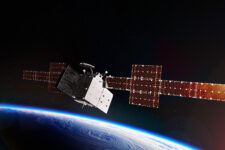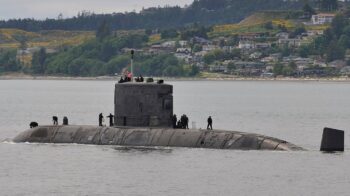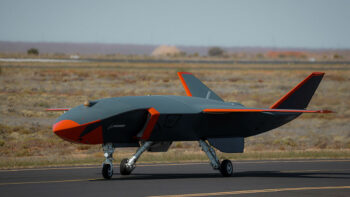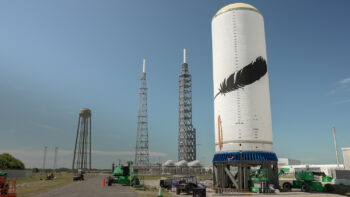
Gen. James Dickinson, SPACECOM commander (file)
WASHINGTON: US Space Command is working to improve its capability keep tabs on what is happening in space — including looking to ground- and ship-based missile defense platforms as additional sources of much needed data, SPACECOM head Gen. Jim Dickinson said today.
“My number one priority within the command is: how do I increase my battlespace awareness, in particular, how do I look at the space domain?” he told the Air Force Association’s annual conference in Orlando.
To do that, SPACECOM has been trying to figure out how to integrate “nontraditional sensors” into its network of ground- and space-based radar and telescopes that keep tabs on objects in space, Dickinson said.
SPACECOM’s 18th Space Squadron runs the Space Surveillance Network, which comprises 30-odd sensors around the world.
“We’ve been looking at sensors that haven’t traditionally been used for space domain awareness,” he explained. “So, we’ve taken some missile defense sensors that have typically, as I said, not been part of our integrated approach, and we are starting to integrate them into a sensor network that provides us a common operating picture that gives us much more fidelity.”
As examples, Dickinson mentioned the AN/TPY-2 (Army-Navy Transportable Radar Surveillance) X-band radars used by the Army’s Terminal High Altitude Area Defense (THAAD) system, and the Navy’s Aegis Ballistic Missile Defense system.
But the push to expand SPACECOM’s vision won’t end there, Dickinson stressed.
“We’re making the best use of the sensors we currently have in the Department of Defense around the world. And then we’re looking at the future of that,” he said. “So, what requirements do we need to put in addition on those sensors that we have today? And then what sensors do we need in the future to increase our battlespace awareness, space domain awareness, missile warning and missile defense?”
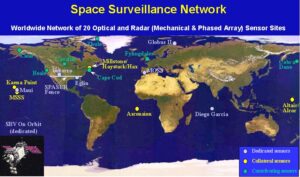 SPACECOM and Space Force (and the Air Force before them) have long talked about the need to expand and update the SSN by integrating commercial and allied sensor data.
SPACECOM and Space Force (and the Air Force before them) have long talked about the need to expand and update the SSN by integrating commercial and allied sensor data.
However, up to now there has been little progress, at least in the public domain — in large part due long-standing trouble with upgrading SPACECOM’s ancient computer systems and software for managing the SSN network.
At the annual Advanced Maui Optical and Space Surveillance Technologies (AMOS) conference this past September, the then-head of the National Space Defense Center (NSDC) said work was ongoing to create an “an integrated sensor support plan” to fuse space observation data from commercial, allied and Intelligence Community sources — but that a number of obstacles remained.
The NSDC is the organization at SPACECOM that works with the Intelligence Community, in particular the National Reconnaissance Office that operates the nation’s spy satellites, to pull together information from various sources on the space activities of other nations.
This is not for lack of commercial interest in helping out, Dickinson said. In fact, SPACECOM has been inundated with an “overwhelming outpouring” of interest from commercial firms across its mission sets, he said.
“So much so, that we’ve had to step back for a second and create a new commercial integration framework and a new commercial strategy within the command to address that commercial interest in being part of the part of the team here,” Dickinson elaborated. “So we’re very excited about that. We look forward to it, and we’ll continue to work it.”

